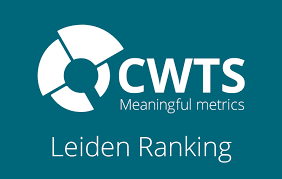
The CWTS Leiden Ranking 2022 offers important insights into the scientific performance of over 1300 major universities worldwide. Select your preferred indicators, generate results, and explore the performance of universities.
Select, generate and explore
The Leiden Ranking enables you to select sophisticated bibliometric indicators, to generate results based on these indicators and to explore the results from three different perspectives. Best known is the traditional list view, in which you can rank universities according to a selected indicator. The Leiden Ranking offers two additional perspectives: the chart view and the map view. The chart view shows universities in a scatter plot, so that you can explore the performance of universities using two selected indicators. The map view shows universities in a world map and provides a geographical perspective on universities and their performance.
Multidimensional perspective
The Leiden Ranking stands for a multidimensional perspective on university performance. Our principles for responsible use of university rankings explain why this is crucial. It is up to you to select the indicator that you wish to use to rank universities. The Leiden Ranking provides indicators of scientific impact, collaboration, open access publishing, and gender diversity. Size matters when comparing universities: performance can be viewed from an absolute or a relative perspective (e.g., the number versus the percentage of highly cited publications). That is why size-dependent and size-independent indicators are consistently presented together in the Leiden Ranking. This highlights that both types of indicators need to be taken into account.
A unique ranking
Compared with other university rankings, the Leiden Ranking offers more advanced bibliometric indicators. The underlying methodology is richly documented. The Leiden Ranking provides information exclusively about the research done at universities. Research is represented in publications, and carefully collected data about these publications forms the basis for the Leiden Ranking. This basis also ensures the independence of the Leiden Ranking, since there is no reliance on data submitted by the universities themselves. Finally, because universities are complex institutions that have a variety of forms, contexts and missions, their performance cannot be represented by a single number. The Leiden Ranking presents a variety of indicators for you to explore the performance of universities from different angles.